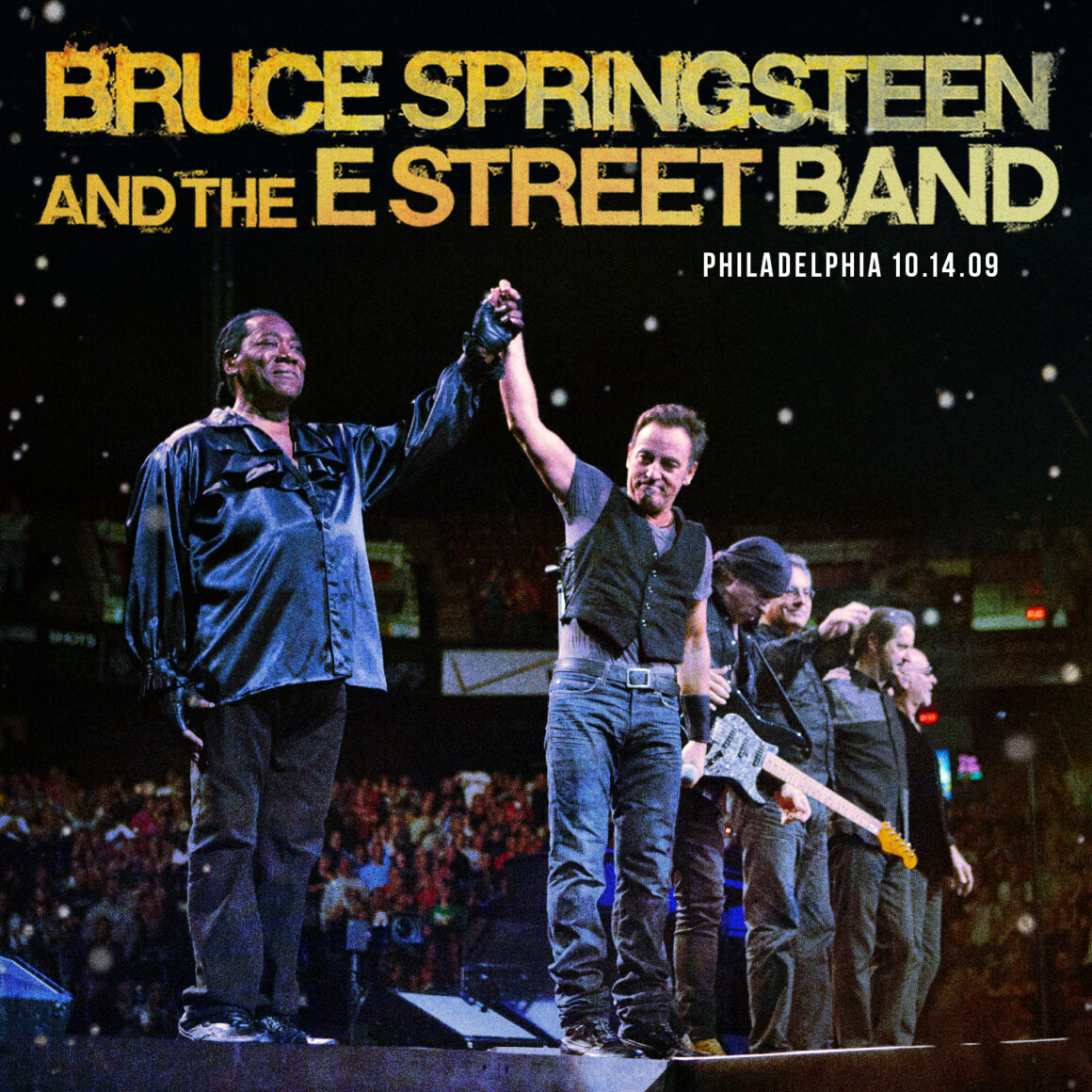
In The Darkness I Hear Somebody Call My Name
By Erik Flannigan
The third and final leg of the Working On a Dream tour wrapped 25 months of near-continuous touring for Bruce Springsteen and the E Street Band. The run started in support of 2007’s Magic, while 2009 was in service of its aforenamed follow-up.
With so many gigs already under their belts and multiple passes through key markets, Springsteen was looking for a way to shake things up. “We were trying to [do] some things that would make these last series of shows special for our fans,” he tells the Philly faithful gathered in what was once simply called The Spectrum — and home to some of the band’s greatest arena shows.
The idea they settled on was to perform his classic albums in full. On this night the selection is Darkness on the Edge of Town, “a record that means a great, great deal to me,” Springsteen says. “I think it summarized a lot of things that were going on in the world that I was in at the time. When it came out…it wasn’t greeted right away with the kind of affection that it’s gained over the years. People didn’t initially know quite what to make of it.”
While he has alluded to it before, Springsteen’s point of view that the album took time to resonate is fascinating to reconsider. In hindsight, it feels like Darkness on the Edge of Town was a seminal album from the start, but its status was earned over time, due in no small part to the songs, “being in our setlist…night after night for [33] years.”
A full performance of Darkness on the Edge of Town is the centerpiece of this fine October 14, 2009 set, part of a four-show stand that would mark Springsteen’s farewell performances at the legendary Spectrum.
As Springsteen notes, Darkness songs have been a persistent force in his setlists for decades, but this in-sequence reading resets our perspective on the material. “Badlands” is returned to a starting role opening the album, and there’s still bite in the old warhorse, aided by an exuberant audience reaction and singalong.
Sonic sharpness continues through a seamless transition to “Adam Raised a Cain.” The guitar tone is spot on, especially the solo, and Springsteen sings with conviction that belies the years that have passed since the song was written. From the angst of “Adam Raised a Cain” is the majestic “Something in the Night,” led by Roy Bittan’s emotional piano part.
Next, “Candy’s Room” combines the prettiness of “Something” and the edge of “Adam” into one of Springsteen’s most dynamic and appealing arrangements. Stevie Van Zandt’s backing vocals provide an extra jolt of urgency. Bittan takes center stage again for “Racing in the Street,” as he carries the unforgettable melody on piano, while Springsteen’s vocal cadence and phrasing have shifted in modern performances to emphasize weariness over wistfulness. The “Factory” whistle blows earnestly in Philly with fine pedal-steel guitar from Nils Lofgren and intriguingly angular fretwork from Van Zandt.
The stunner of the Darkness set is “Streets of Fire,” easily the least-played song from the album since 1978 in only its ninth appearance since the Darkness tour. Springsteen gets up for it, hitting the heightened vocal line “I heard somebody call my name” like you want him to and turning in scorching guitar throughout.
The spark of “Streets of Fire” helps ignite the final two songs of the album sequence. “Prove It All Night,” often played early in live sets, serves as more of a sizzling denouement with all three guitarists contributing meaningfully, including Lofgren’s Theremin-like solo. The title track also serves as the album closer, and the reading here is full-blooded and flawless, as again Springsteen reaches for and reaches his most emotive vocal range on lines like “I lost my faith when I lost my wife,” “I’ll be on the hill ‘cause I can’t stop,” and the song’s final, held “towwwwwwn.” It feels wholly appropriate that the expanded 2009 band line-up stood down to let the core E Streeters and Charlie Giordano perform Darkness On the Edge of Town as authentically as it could be in 2009.
While a child singing “Waitin’ on a Sunday Day” does shatter the spell woven by the full Darkness, the rest of the show that surrounds the album suite has its share of special moments. The first half of the show includes the only airing to date of “What Love Can Do” from Working On a Dream. It’s a shame the song has been slept on by the merits of this excellent performance in which the band is firmly locked into the arrangement and Springsteen and Van Zandt sing with gripping intensity. Fun fact: the song also gives this concert two different biblical references to Cain.
The second part of the show boasts the welcome inclusion of “Human Touch,” which, after ten previous attempts, crosses the line fully into E Street Band territory and declares its citizenship. This lively take offers plenty of guitar, lilting vocals from Patti Scialfa and a superb ending.
“Long Walk Home” follows, and doubles as a good title for this final stretch of the 2009 tour, when Springsteen gave the people what they wanted, full performances of his most beloved works, without it coming off as nostalgia.
Stream this show, along with hundreds more archival Bruce Springsteen shows with a 7-day free trial. Explore the Bruce Springsteen catalog and start your free trial here.